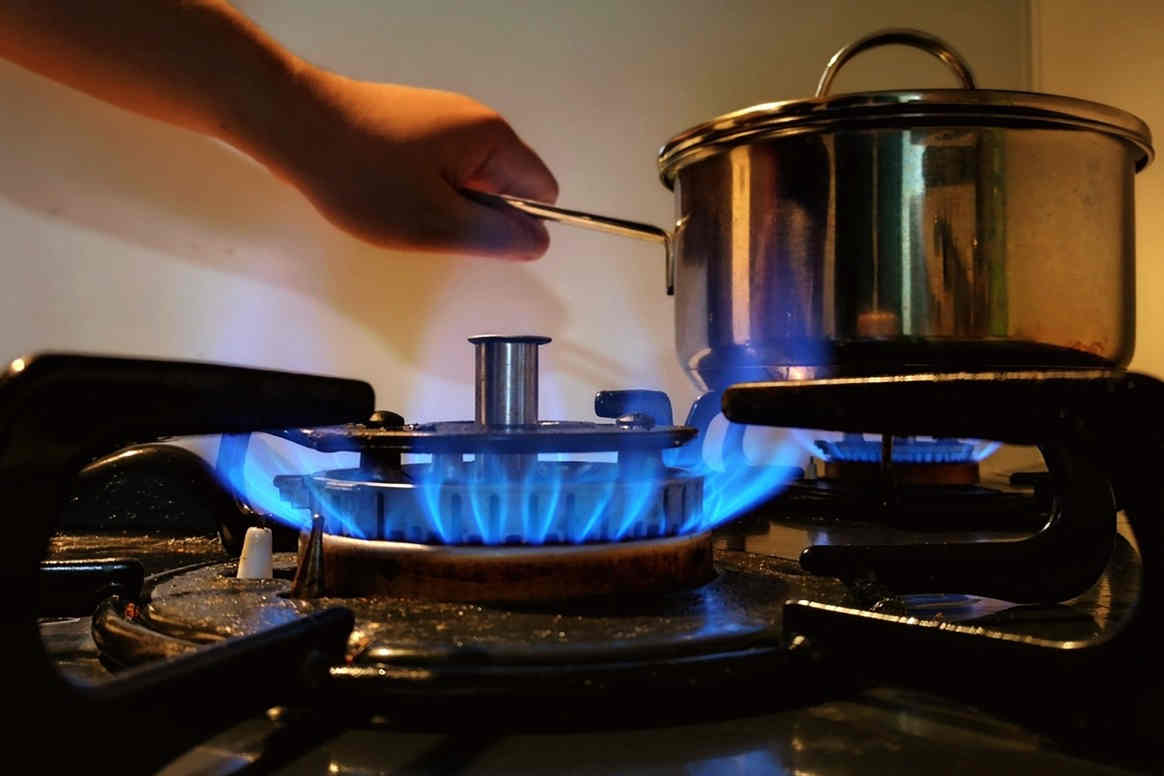Every time people search for a stove, they become overwhelmed with the various types they can find at the supermarket. It’s essential to choose a pan that complements the stove’s features.
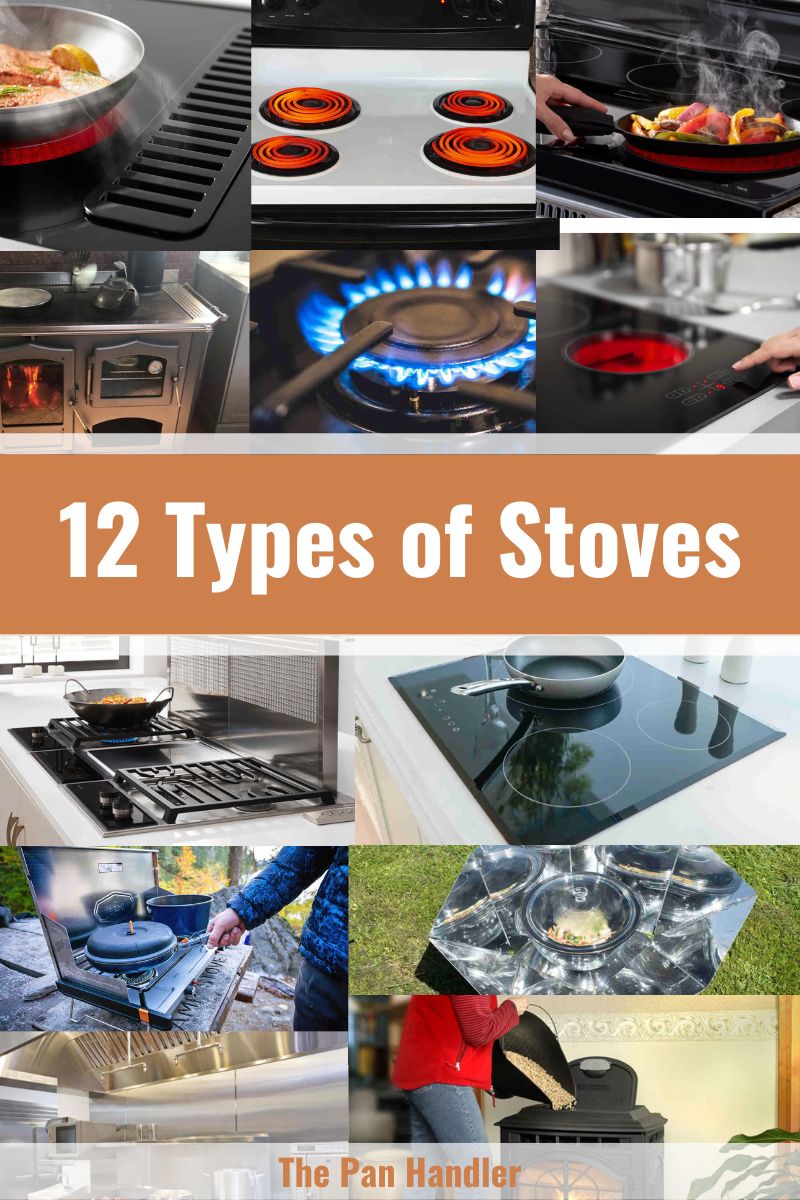
Once you have decided on a stove that will best suit your kitchen needs, understand the compatibility between stoves and cookware. This maximizes the efficiency, performance, and safety of your cooking experience.
Do you need help deciding which type of stove to buy? Check our comprehensive guide to help you have delicious results in the kitchen.
| Stove Type | Pros | Cons |
|---|---|---|
| Gas Stove | Precise control, Instant heat | Gas line needed, Safety risks |
| Induction Stove | Fast heating, Energy-efficient | Specific pans, Expensive |
| Electric Stove | Affordable, Easy to clean | Slow heat, High electricity use |
| Coil Stove | Affordable, Replaceable coils | Uneven heat, Hard to clean |
| Smooth Stove | Easy to clean, Modern appearance | Susceptible to scratches, Slow heat |
| Modular Stove | Customizable, Versatile | Expensive, Complex installation |
| Wood-Burning Stove | Heat efficient, Self-sufficiency | Smoke, Maintenance, Wood supply |
| Downdraft Stove | Space-saving, Flexible installation | Limited ventilation, Noise |
| Portable Stove | Portability, Versatility | Limited heat, Fuel dependent |
| Pellet Stove | Efficient, Renewable fuel, Automatic | High upfront cost, Maintenance |
| Solar Stove | Sustainable, Portable | Weather-dependent, Slow cooking |
| Commercial Stove | Heavy duty, Precise control | Bulky, Expensive, Complex install |
Things to Consider When Choosing a Stove
With such a long list of stoves, which type is better for your kitchen needs?
Choosing the right type of stove involves considering some factors to ensure you select the suitable and functional one for your needs.
- Ventilation Needs – Cooking may produce smoke, which requires proper ventilation to ensure your safety and indoor air quality. Check your kitchen ventilation; install a range hood if it has poor ventilation. You can also look for stoves with compatible or built-in ventilation options.
- Installation Needs – Check the installation requirements of the stove you are about to choose. Consider the fuel type available around your location, like gas or electric. Electric stoves require an electrical outlet, while gas stoves need a gas line. So, be sure your kitchen has the layout and necessary connections. Besides this, consider the space available for your stove and its compatibility with your kitchen layout.
- Maintenance and Cleaning – Like other appliances, stoves need regular maintenance to ensure optimal performance. So, when you choose a stove, select the type that is easy to clean and maintain. Smooth, sealed surfaces and removable burner grates can make cleaning easier. Newer models also have self-cleaning features.
- Features You Need – Look for the specific features you need for a stove. Consider its cooking capacity, number of burners, heating elements required, or other features that make your cooking experience seamless.
But, there is more to these considerations. You also have to choose the suitable pans for the stove that suits your needs. Here are the stoves you can choose from and their suitable pans.
12 Types of Stoves and Their Suitable Pans
Each type of stove requires compatible pans and preferred cooking styles for better control over heat distribution, optimal cooking techniques, and delicious cooking results. Here are 12 stoves, their compatible pans, and their preferred cooking style.
| Stove Type | Suitable Cooking Technique | Best Suitable Pan |
| Gas Stove | All cooking techniques | All types of pans |
| Induction Stove | Stir-frying, sautéing, simmering, boiling | Induction-compatible pans |
| Electric Stove | All cooking techniques | All types of pans |
| Coil Stove | All cooking techniques | All types of pans |
| Smooth Stove | All cooking techniques | All types of pans |
| Modular Stove | All cooking techniques | All types of pans |
| Wood-Burning Stove | Grilling, smoking, roasting, baking | Cast iron pans |
| Downdraft Stove | All cooking techniques | All types of pans |
| Portable Stove | Outdoor cooking | Lightweight, portable cookware |
| Pellet Stove | Slow cooking, smoking | All types of pans |
| Solar Stove | Boiling, simmering | All types of pans |
| Commercial Stove | All cooking techniques | Heavy-duty, commercial-grade pans |
1. Gas Stove
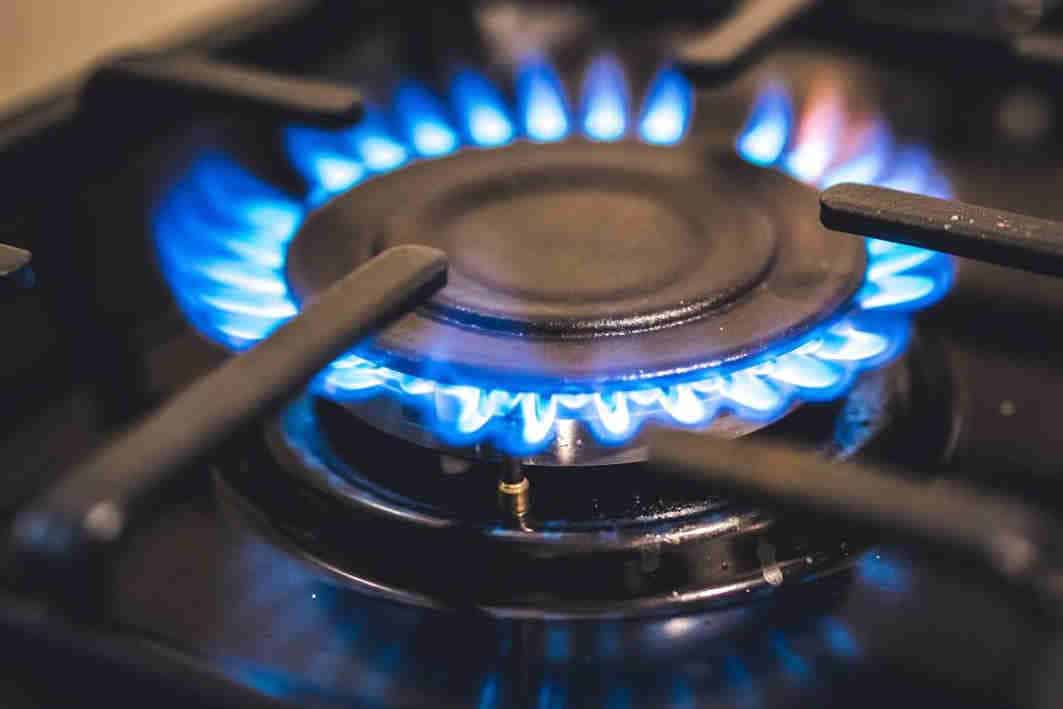
Gas stoves are what we usually see in most kitchens. It uses natural gas or propane that can produce a powerful open flame, which makes the stoves produce instant heat quickly.
Pros:
- Precise temperature control.
- Instant heat.
- You can still use the gas stove during power outages.
Cons:
- Requires gas line.
- Risk for gas leaks if not properly installed and maintained.
- Its open flame poses a risk of fires or accidental burns.
Home cooks and professionals prefer gas stoves because of their precise temperature control, immediate heat, and cooking ability during power outages. Gas stoves are compatible with stainless steel, copper, cast iron, and non-stick coatings. But cookware with sturdy bottoms works best on gas stoves.
Although gas stoves suit all cooking styles, their precise temperature control makes delicate cooking styles possible. Its open flame also makes cooking techniques like stir-frying and charring vegetables possible.
2. Induction Stove
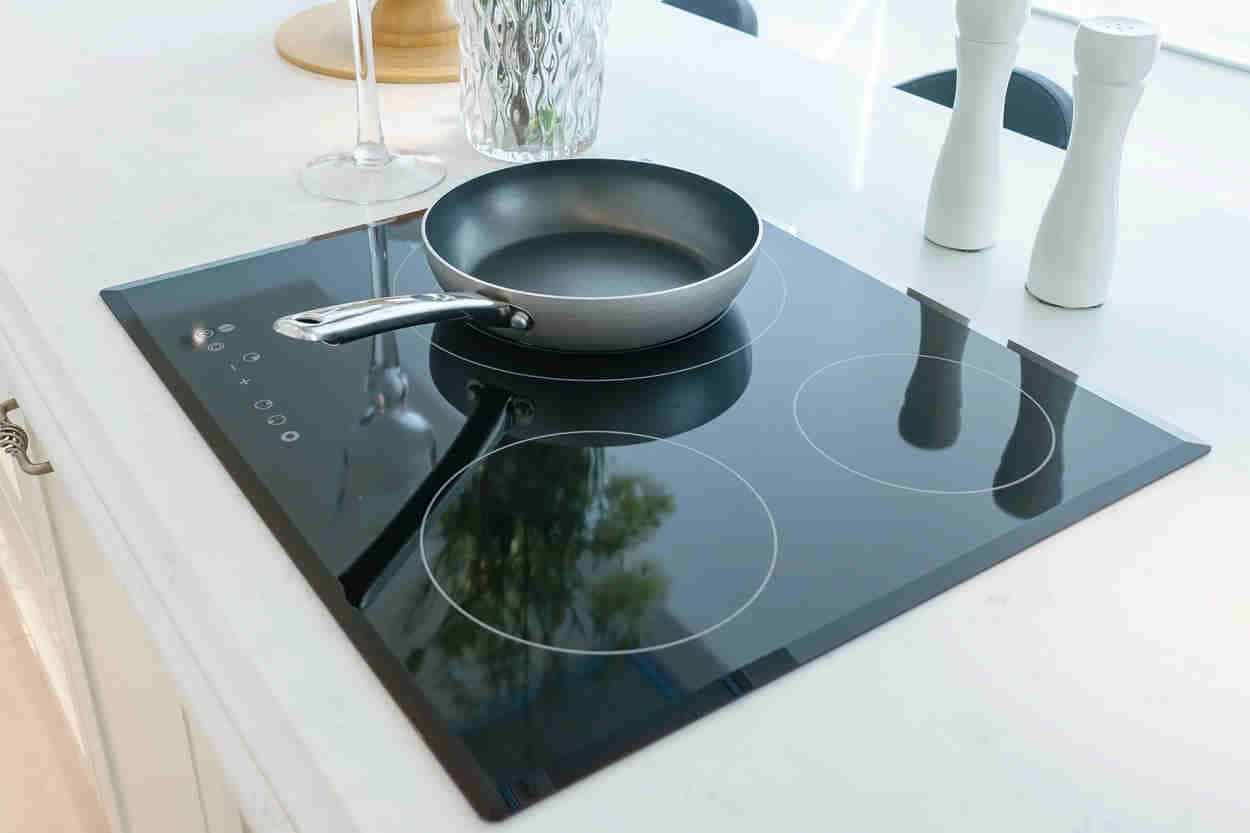
Instead of using metal coils like regular stoves, induction stoves utilize electricity and require electromagnets to transfer heat to the pan. While the gas stove is impressive at heating up fast, it does not come close to the induction stove. What’s more impressive is it does not release any gas, making it a safer option for a stove.
Pros:
- Fast heating
- Precise temperature control.
- Energy-efficient.
Cons:
- Needs a specific pan or cookware.
- Expensive than gas or electric stoves.
- Dependent on electricity.
A drawback of the induction stove is that it needs induction-compatible cookware or a magnet that adheres to its base. This helps provide precise heat to the cookware, making it suitable for boiling, stir-frying, and sautéing.
3. Electric Stoves
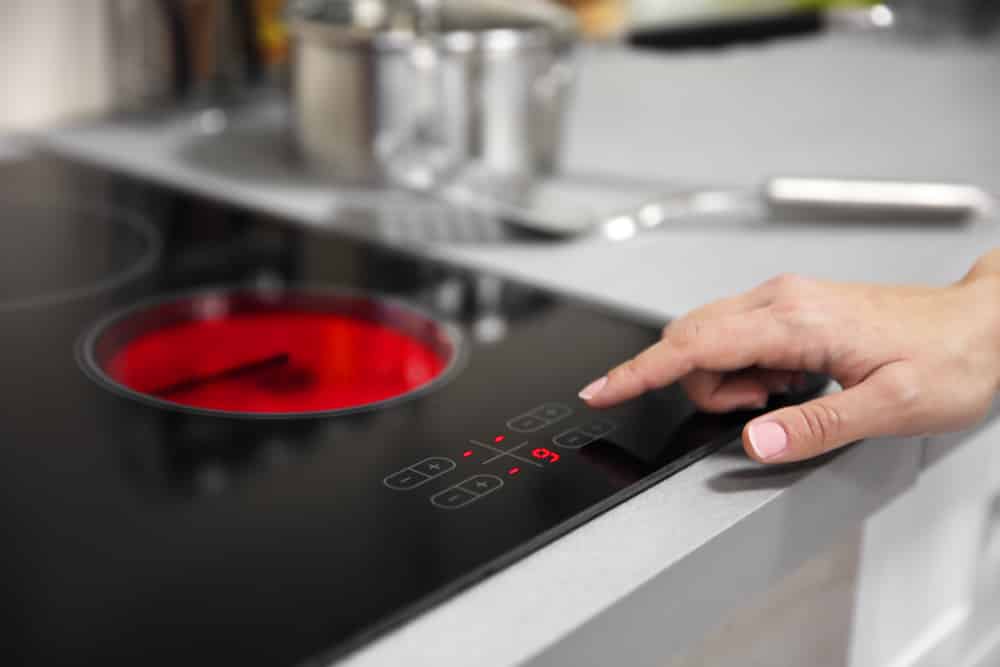
Most people choose electric stoves because of their convenience, ease of use, safety, and relatively low price. This stove does not produce an open flame; it operates using electricity, which makes its flat surface produce heat.
Pros:
- Affordable compared to gas or induction stoves.
- Commonly used among households.
- Easy to use and clean.
Cons:
- Slower heat up and cooling.
- Less precise in controlling temperature compared to gas or induction stoves.
- Heavily relies on electricity. It is not functional during power outages. It consumes thrice energy compared to a gas stove.
Electric stoves are mostly glass or ceramic cooktops, which makes them work well with a wide range of pans, including aluminum, stainless steel, non-stick coated pans, and cast iron. Choosing cookware with a flat and smooth bottom is best to ensure even heat distribution.
Although all cooking styles are suitable in electric stoves, it is essential to note that it may take a bit longer.
4. Coil Stove
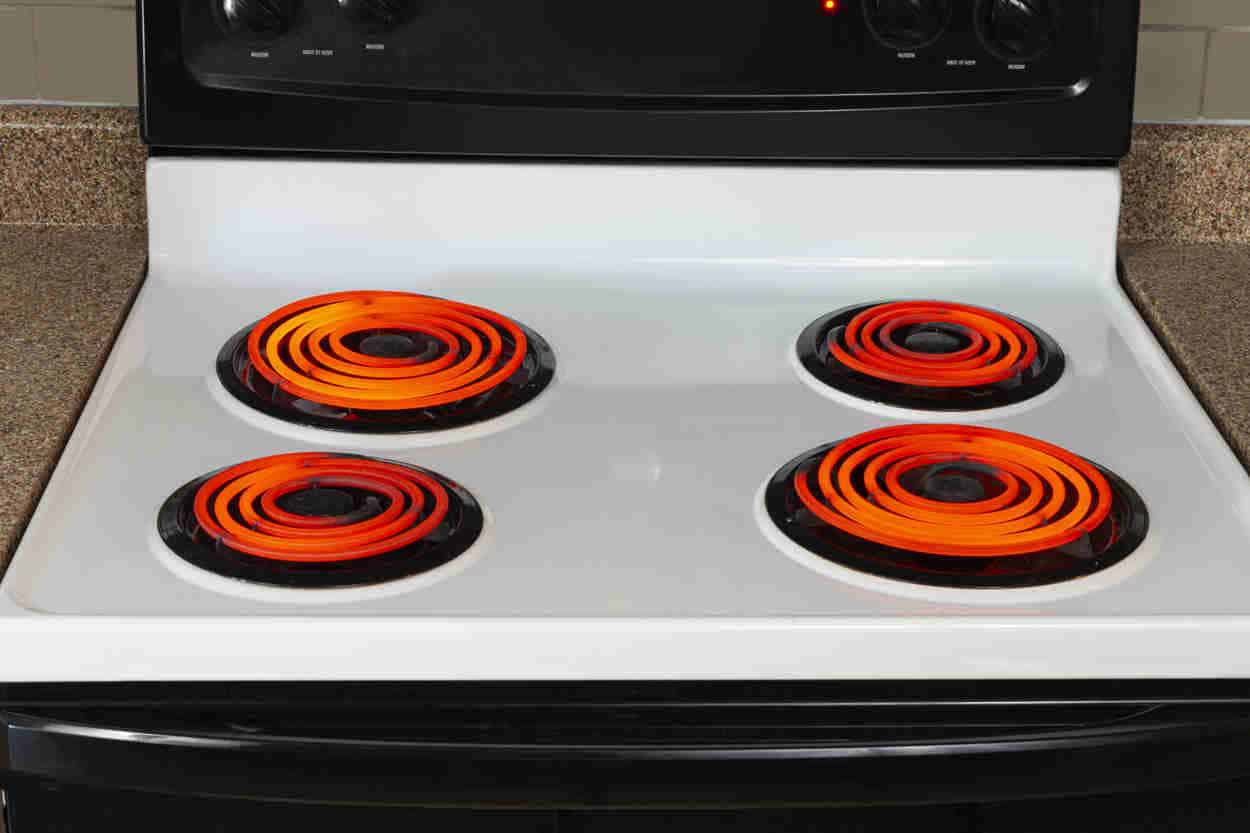
A stress-free cooking setup is what coil stoves offer. It may be good that coil stove tops heat up quickly, but how long they stay hot can become a burn risk. Coil stoves are more efficient than smooth-top stoves, but the cookware becomes burnt, taking more time and effort to clean.
Pros:
- Affordable
- Replaceable coils
Cons:
- Uneven heat distribution
- Challenging to clean
- Slower heat-up and cooling
A wide range of cookware is compatible with coil stoves. This includes stainless steel, aluminum, cast iron, and non-stick coated pans with flat bottoms to ensure the cookware has proper contact with the coils and even heat distribution.
5. Smooth Stove
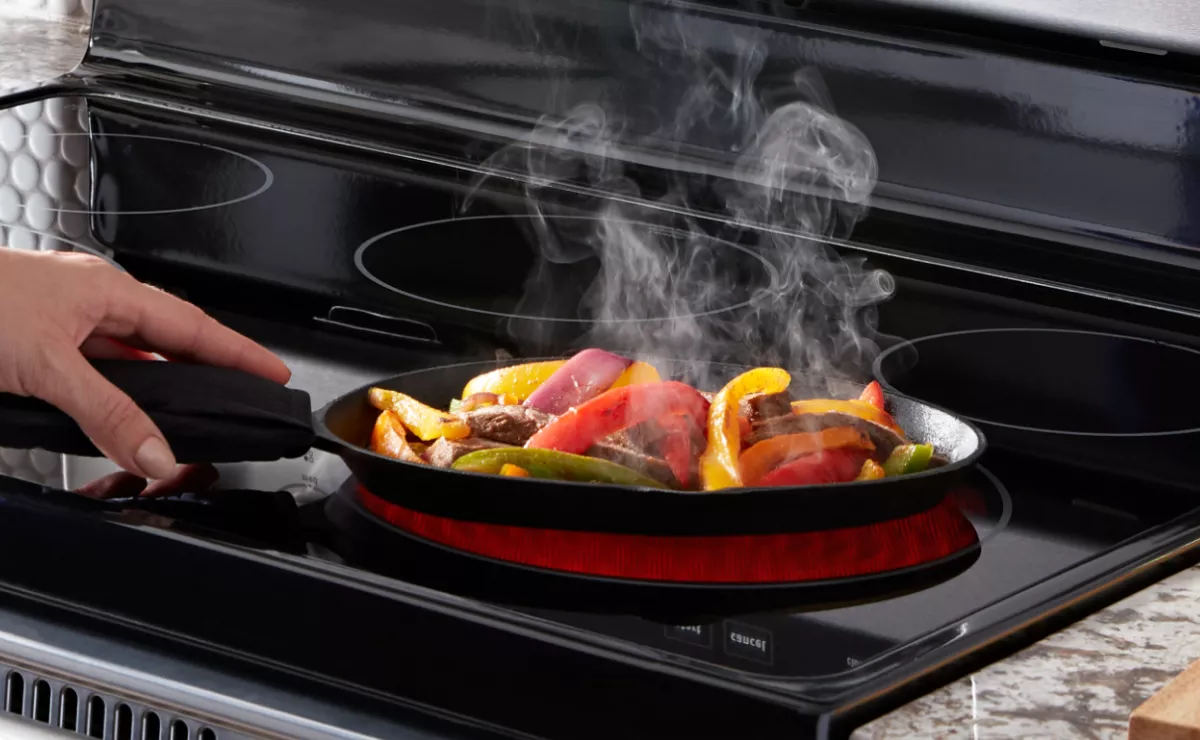
Do you hate cleaning coil stoves? This one is your answer. You can easily wipe off any spilled food on top of the stove. Smooth stoves are also called radiant cooktops; it has a glass-ceramic surface that transfers the heat to the cookware.
Pros:
- Easy to clean.
- Even heat distribution.
- Modern appearance.
Cons:
- The glass-ceramic surface is susceptible to scratches or damage from heavy or abrasive cookware.
- Slower heat response.
- Limited pan compatibility.
A smooth stove is suitable for individuals who prefer an easy-to-clean cooktop. Although it can accommodate various cooking styles, the stove only works best with cookware that has flat and smooth bottoms. Pans with warped or rounded bottoms may not receive heat transfer efficiently.
6. Modular Stove
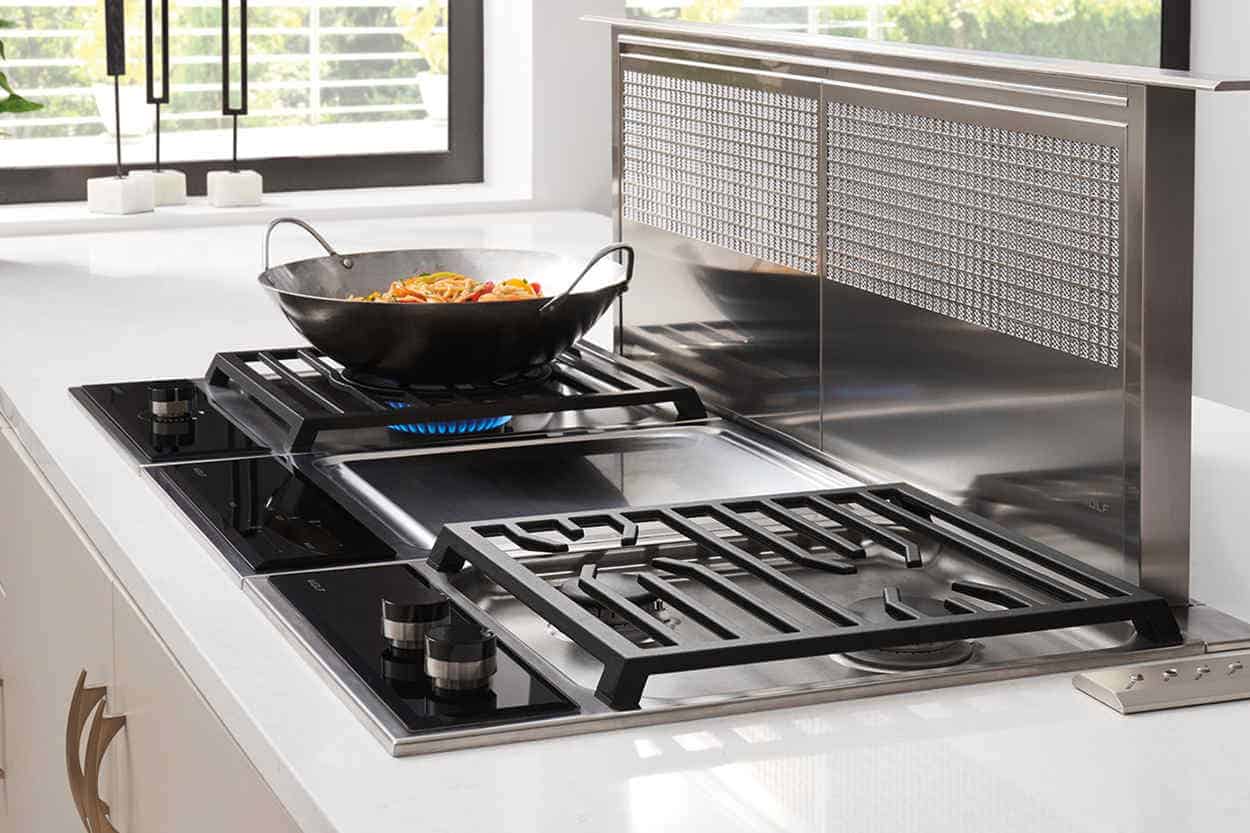
It has the best of both worlds– a cooktop that uses electric and gas burners. Modular stoves allow you to mix and match different modules to accommodate your cooking needs. You can see most modular stoves in professional kitchens or enthusiastic home cooks that want a versatile and customizable cooking solution.
Pros:
- Customizable configuration
- Versatility in cooking methods
- Expandable
Cons:
- Expensive
- Complex to install
- Limited availability
You must consider the cooking techniques you plan to use with each module and choose a pan accordingly. If you plan to use griddle modules, use pans that are compatible with the grill.
7. Wood-Burning Stove
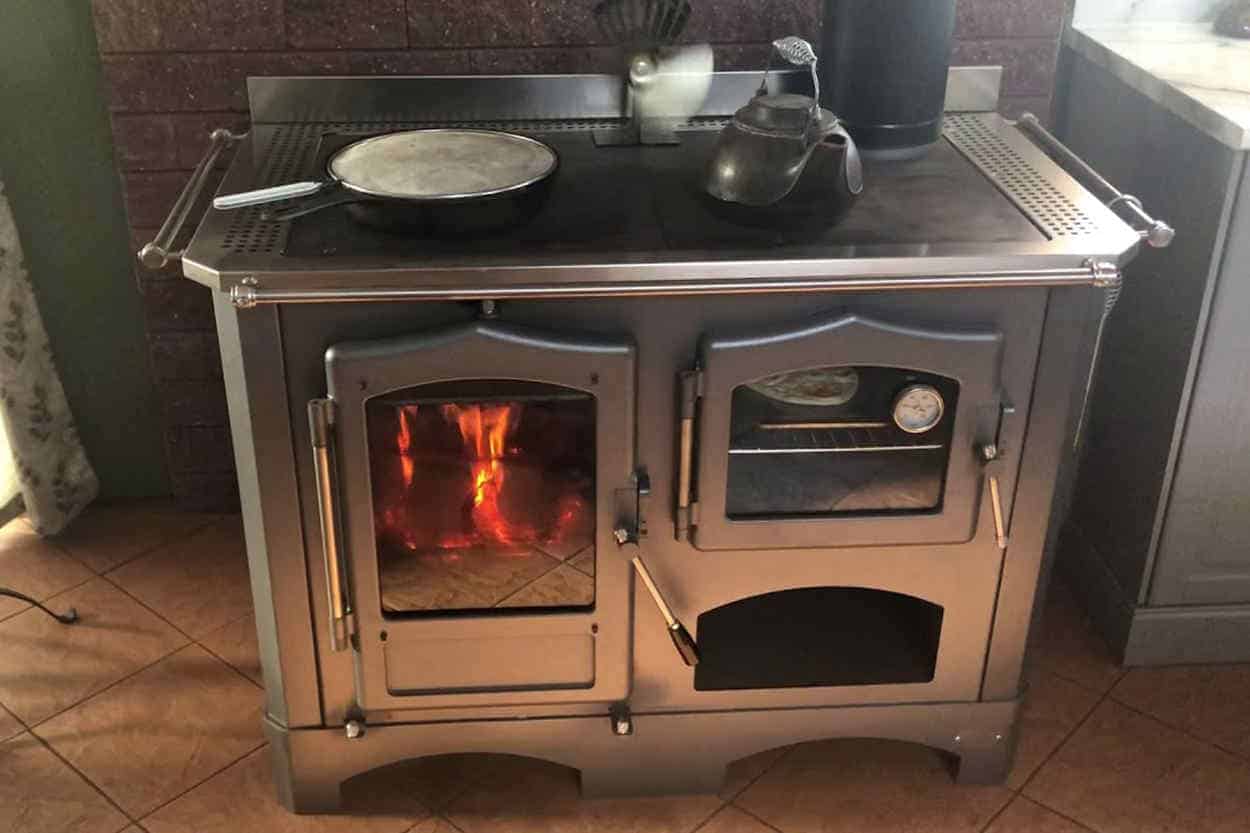
It is old-fashioned yet functional in cooking and heating the home. A wood-burning stove burns wood in a chamber to produce heat. These stoves are all-metal, made of steel or cast iron. However, as technology advances, this stove has been improved to become more energy-efficient and clean burning.
Pros:
- Heat efficient
- Self-sufficiency
- Versatile
Cons:
- Smoke and emissions
- Cleaning and maintenance
- Dependent on wood supply
Wood-burning stoves are best for households in areas with sustainable wood supply. The intense heat the wood fire produces makes the food flavorful and smoky. However, it is best to note that even when it can accommodate various types of cookware, you should check if the pans can withstand the high temperatures of the wood-burning stove.
8. Downdraft Stove
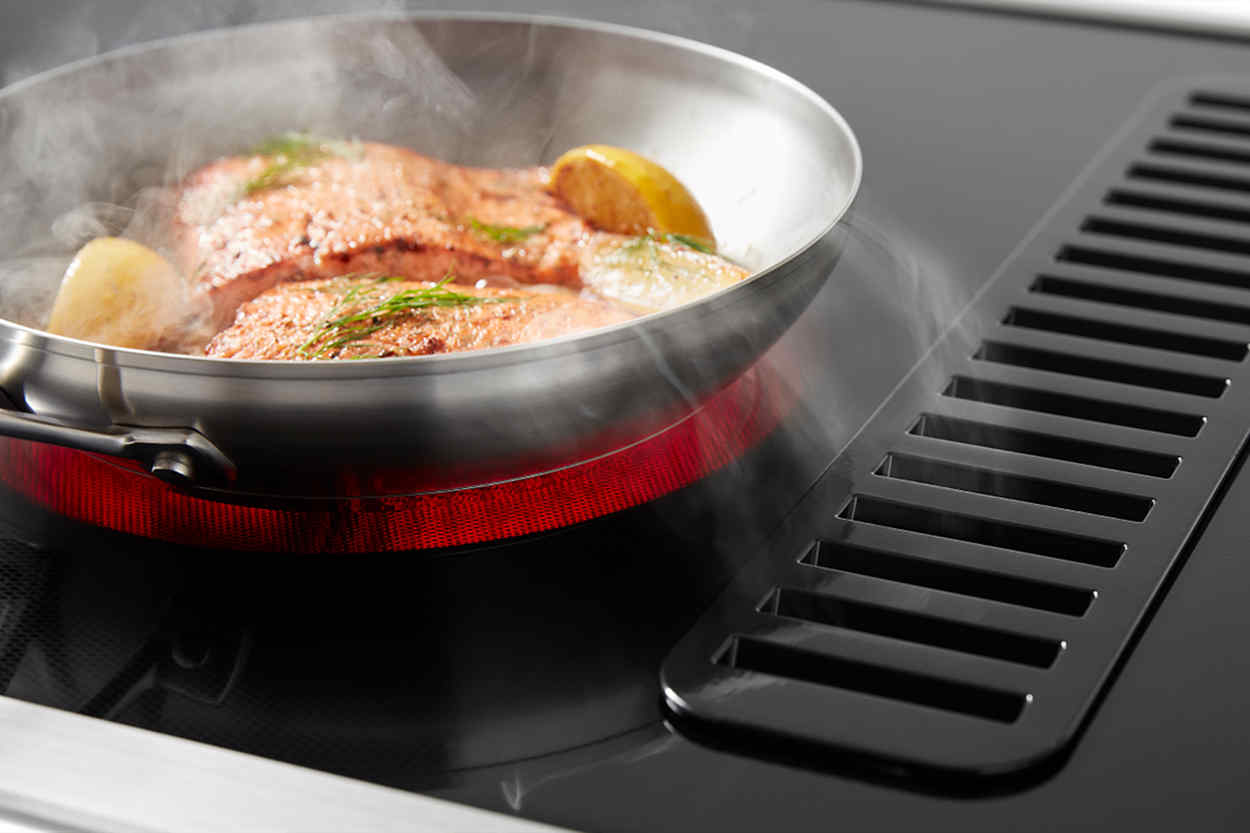
If you do not like bulky range hoods in the kitchen, consider having a downdraft stove. This cooktop has a built-in ventilation system that removes steam and smoke when cooking.
Pros:
- Space-saving design
- Flexible installation
Cons:
- Limited ventilation
- Noise level
- Requires heavy cleaning and regular maintenance
You can mostly see downdraft stoves in kitchens with limited overhead space. Downdraft is suitable for several cookwares. Just ensure that the pans are compatible with the cooking techniques you use.
9. Portable Stove
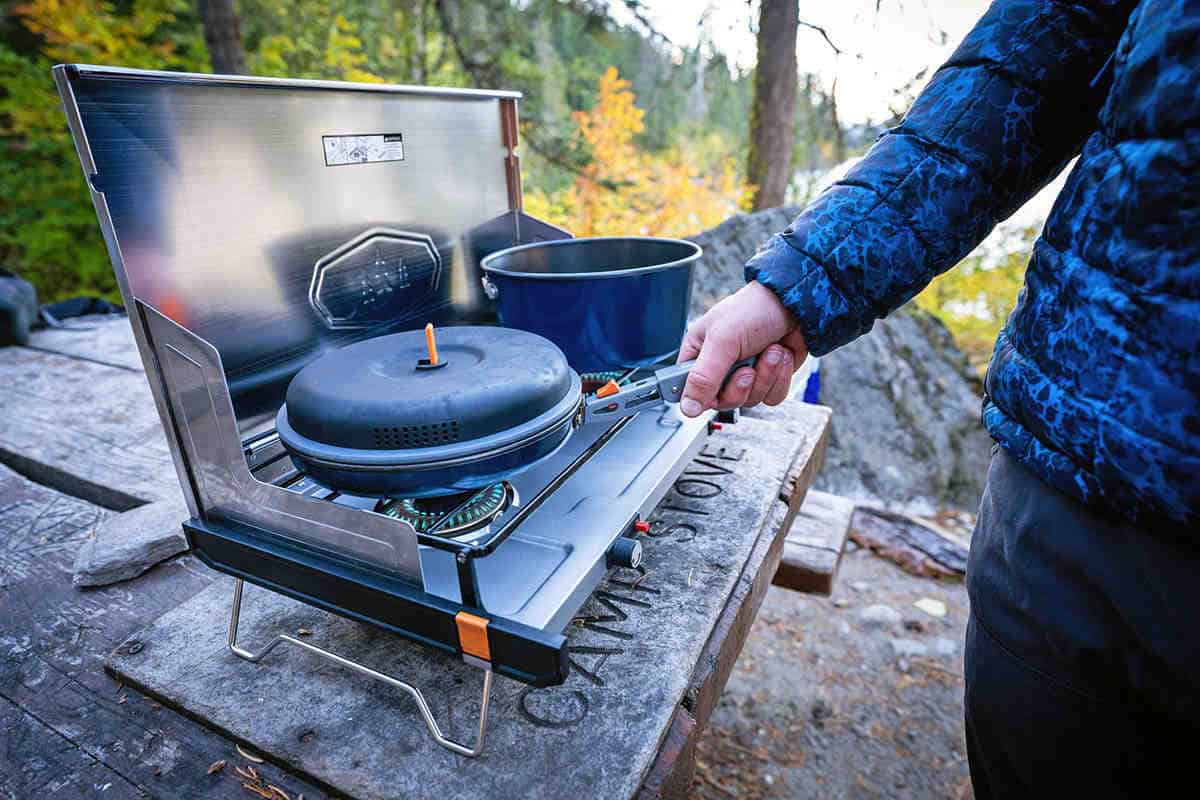
A stove that you can bring anywhere! Most portable stoves come with 2 to 3 heating elements: pot support, fuel can holder, and burner. It is best for picnics and camping; ideal for outdoor enthusiasts.
Pros:
- Portability
- Versatility
- Convenience
Cons:
- Limited heat output
- Dependent on fuel
Portable stoves are only suitable for simple and quick cooking methods. It is also best to choose pans compatible with the heat source and sturdy handles for a safe and secure cooking experience.
10. Pellet Stove

This stove is named after its fuel— pellets of recycled and shaved sawdust or other biomass materials. What’s nice about using a pellet is that it is cleaner than firewood, so this is for neat-conscious people.
Pros:
- Highly efficient in providing heat output
- Uses renewable biomass fuel, considered environmentally friendly.
- It has automatic ignition, fuel feeding, and temperature control.
Cons:
- Higher upfront cost compared to gas stoves.
- Requires electricity to operate fans, ignition system, and control mechanisms.
- It needs regular maintenance to prevent ash and creosote accumulation.
However, pellet stoves are primarily designed for heating rather than cooking. It can only offer low-heat cooking techniques if you insist on cooking on the stove. There are no specific pans suitable for pellet stoves, but you have to ensure that the cookware is heat-resistant and ideal for the heat output of the stove.
11. Solar Stove
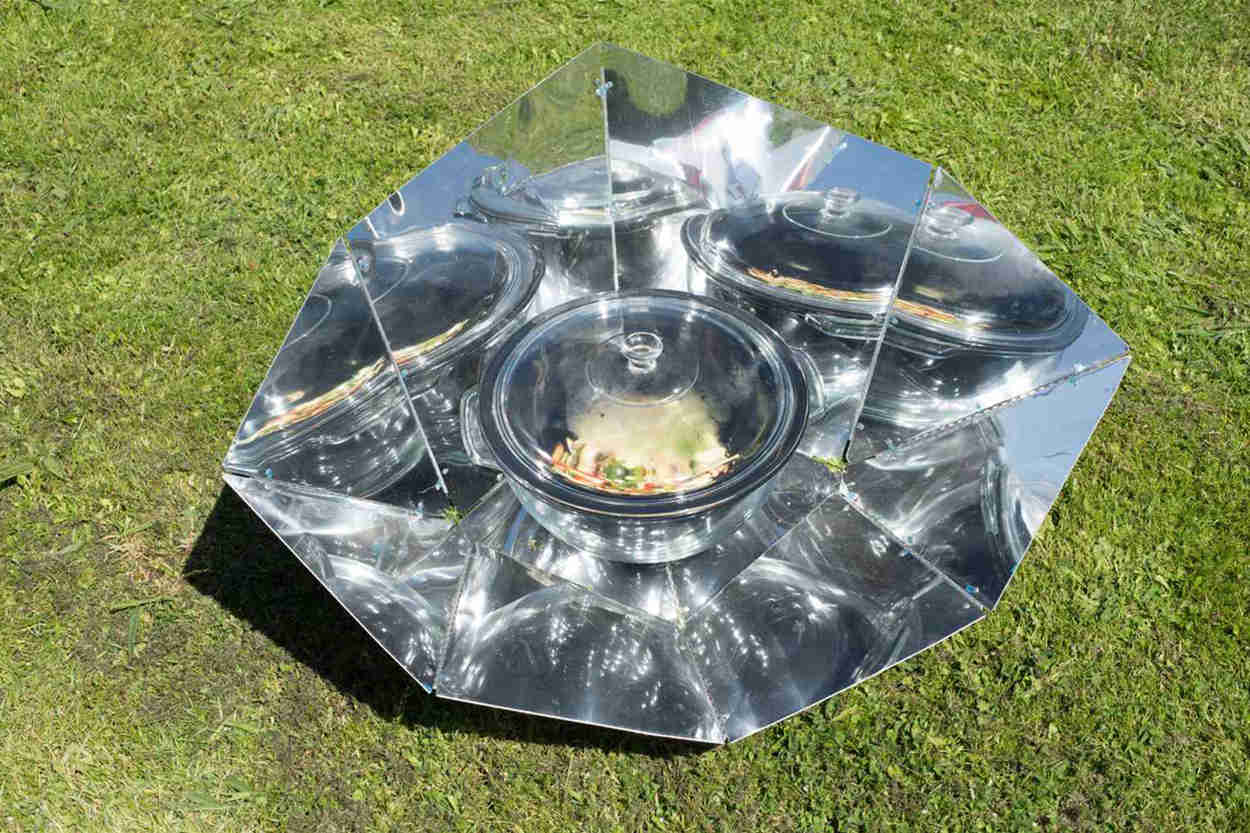
This type is the most environmentally-friendly option on this list. How you can cook on this stove without energy, gas, coal, or firewood is fascinating. Solar stoves harness the sun’s energy and trap it in the box, and there is a spherical structure that reflexes the focused sunlight to produce heat.
Pros:
- Sustainable option.
- Cost savings.
- Portable and versatile.
Cons:
- Weather-dependent. The stove cannot reach its optimal temperature on cloudy or rainy days.
- Slower cooking times.
- Limited cooking temperature control.
Although it is a sustainable choice for cooking, solar stoves are only ideal for outdoor uses, like picnics, camping trips, or emergencies. It is only suitable for slow and gentle cooking, as you cannot control its temperature. Stainless steel, cast iron, and thick-bottomed pans are compatible with solar stoves. These cookwares should be dark-colored to absorb and retain the heat effectively. Choosing pans with tight-fitting lids to help pertain the heat is also essential.
12. Commercial Stove
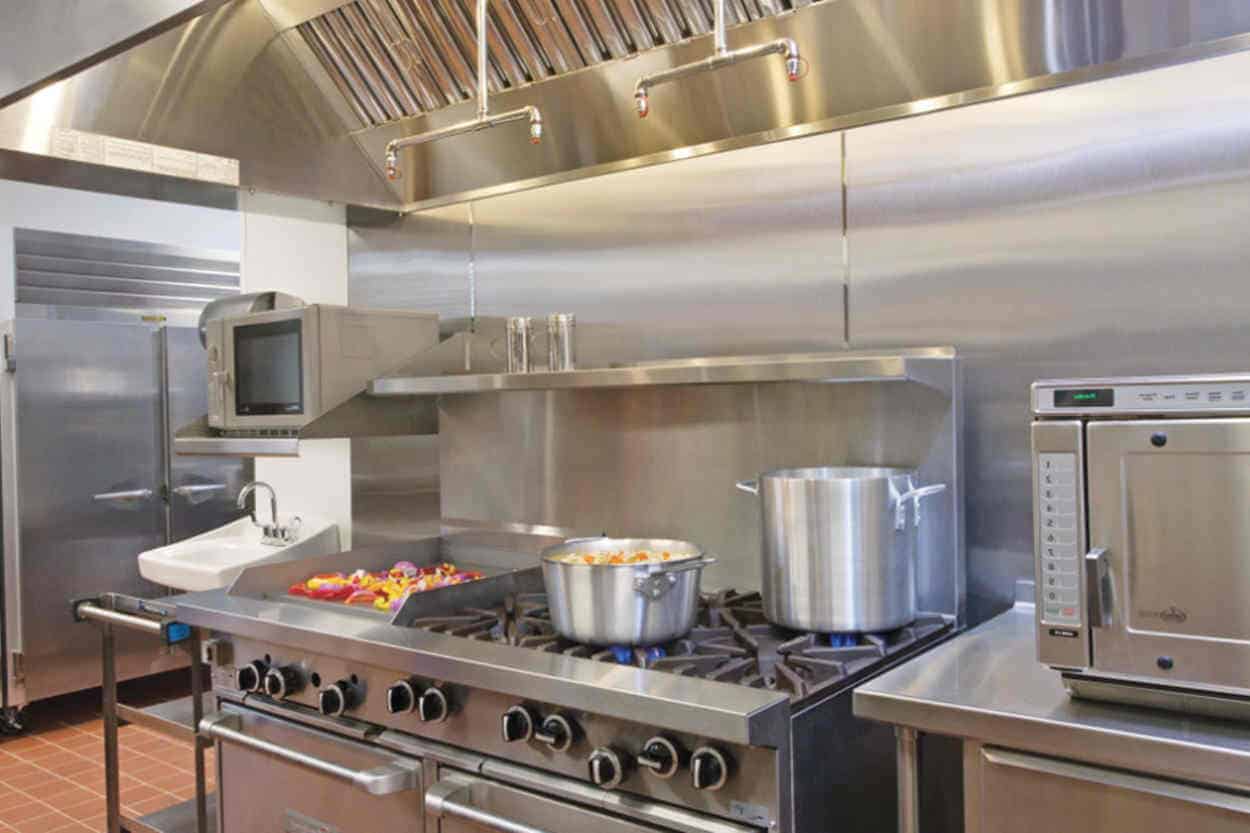
You can only see this stove in the kitchens of restaurants or food and dining establishments. This stove is for heavy-duty use in commercial kitchens; it may operate like regular stoves, but it has more powerful features.
Commercial stoves have extra features like griddles, grill tops, and convection ovens. It uses gas or electricity, or a combination of both.
Pros:
- Heavy duty. It can handle heavy use and demanding cooking environments.
- It has various cooking features that accommodate several cooking techniques and various dishes.
- Precise temperature control. This allows chefs to achieve accurate and consistent cooking results.
Cons:
- Larger and bulkier.
- More expensive due to its advanced features and high-quality materials.
- Complex installation and maintenance.
Chefs and cooks suggest using professional-grade stainless steel or cast iron pans on commercial stoves. These types of pans are durable and have excellent heat conduction properties. There’s no suitable cooking style for commercial stoves; it can accommodate the culinary requirements of the establishment or the preferences the chefs and cooks use.
Final Takeaway: Choose the Right Pan for Your Stove
We hope this guide helps you choose the most suitable pan for your stove and cooking style. Each type of stove offers its benefits and drawbacks, which are the basis for your preferences, convenience, and budget. What is essential is you have the right pan for the type of stove you want; that’s the only thing that matters to make your cooking results optimum.

Michael Johnson is the founder of Pan Mastery, Inspired by his blacksmith grandfather’s legacy has a deep appreciation for hand-crafted pots and pans, he provides invaluable guides, reviews, and recipes to enhance your culinary journey.

